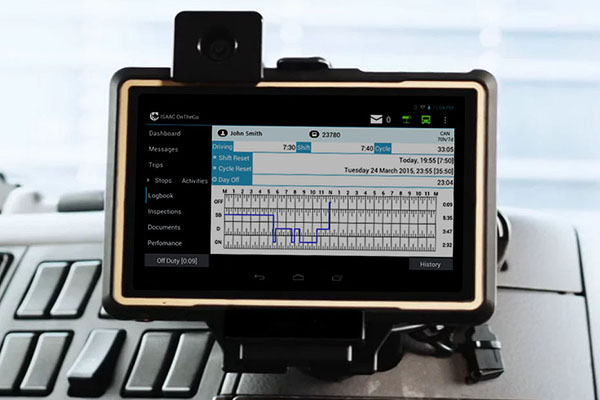LM reader survey finds impact of ELD mandate on trucking sector has been a bumpy ride
Since the federally mandated electronic logging device (ELD) mandate took effect near the end of 2017, the subsequent impact on the truckload shippers and carriers, as was expected, has been fairly bumpy on various fronts. That was a key theme in a Logistics Management reader survey of 349 freight transportation and logistics stakeholders.
Since the federally mandated electronic logging device (ELD) mandate took effect near the end of 2017, the subsequent impact on the truckload shippers and carriers, as was expected, has been fairly bumpy on various fronts.
That was a key theme in a Logistics Management reader survey of 349 freight transportation and logistics stakeholders.
The Federal Motor Carrier Safety Administration formally announced in late 2016 that the federal mandate for ELD for commercial motor carriers was official and would take effect in December 2017, basically confirming the inevitable in some ways within the freight transportation and logistics sectors. The objective of the rule, according to FMCSA, is to strengthen commercial truck and bus drivers’ compliance with hours-of-service (HOS) regulations that combat fatigue. ELD automatically record driving time and monitor engine hours, vehicle movement, miles driven, and location information.
Many trucking observers have long maintained that the need for ELD is obvious, with most explaining that the industry has been reliant on paper logs for far too long. And there were perceived economic benefits through ELD usage, too, as observers said it could likely reduce the effective number of miles a driver could log, further tightening trucking capacity at a time of ongoing limited truck driver supply, rising pay, and higher overall fleet costs.
Of the 349 survey respondents, 84%, or 293, use full truckload shipping services. When it comes to securing truckload capacity since the ELD mandate took effect, the survey found that 57.7% of respondents, or 168, said it was sometimes a problem, with 26.8%, or 78, saying it was usually or always a problem, and another 15.5%, or 45, not being impacted in their ability to secure capacity.
Some of the challenges related to securing capacity included familiar obstacles like: the ongoing driver shortage and tight capacity, confirming tendered offers, and carriers not accepting loads if they are afraid to time out before pick up, as well as other things like increasing rate pressures brought on by the ELD mandate, with shippers saying getting carriers to accept loads at contracted pricing levels.
Given these challenges, and others, it is not surprising that 67%, or 231 survey respondents, indicated that the ELD mandate has led to an inability to secure capacity, with another 29%, or 101, saying there has been no change, and a mere 4%, or 13, noting that things have been fine.
Some steps being taken to counter these challenges and secure needed capacity cited by respondents include building strong carrier relationships and not counting on load boards, with some saying that they used carriers that they only use carriers that had ELD in place prior to last December.
Perhaps the most telling part of the survey is its takeaways relating to ELD-impacted freight rates, which saw a modest level of variation. The highest grouping was the 27.4% of respondents pointing to rate increases of 15% or higher, with another 21.5% saying rates are up 11%-15%. The largest rate gains were noted with 38.5% of respondents citing an uptick of 5%-10%, with 12.5% of respondents saying rates rose by less than 5%.
Taking the rate focus one step further, 83.9% of respondents said their rates were higher than a year ago, and 16.1 saying they were not.
Addressing the impact of ELDs on the trucking market, trucking expert Noel Perry of Transport Futures observed in a Cowen and Co. research note that productivity and capacity have been impacted going back to last fall, while also noting that there will likely be a significant reduction in productivity as the adoption percentage of ELD rise, which he said will happen by April, when the “soft ELD enforcement period” ends and carriers can then face fines or be removed from service for a period.
Mike Regan,Chief Relationship Officer for TranzAct Technologies, pulled no punches when how the ELD mandate has affected the trucking market.
“The impact of the ELD mandate so far is every bit as consequential as people thought it would be, and the impact to date as people get assimilated to an ELD environment is more significant than was anticipated,” he explained.
Regan said the big impact is not being seen with rigs being pulled off the road, but with former one-day lanes having now become two-day lanes, which has led to a situation in which drivers that were previously making 500 mile runs that are now taking two days, as they don’t want to run the risk of being fined.
On top of that, Regan said this creates a situation that sees drivers and carriers needing to assess their parking situation, as they reach the end of their allotted cycle on their lanes.













